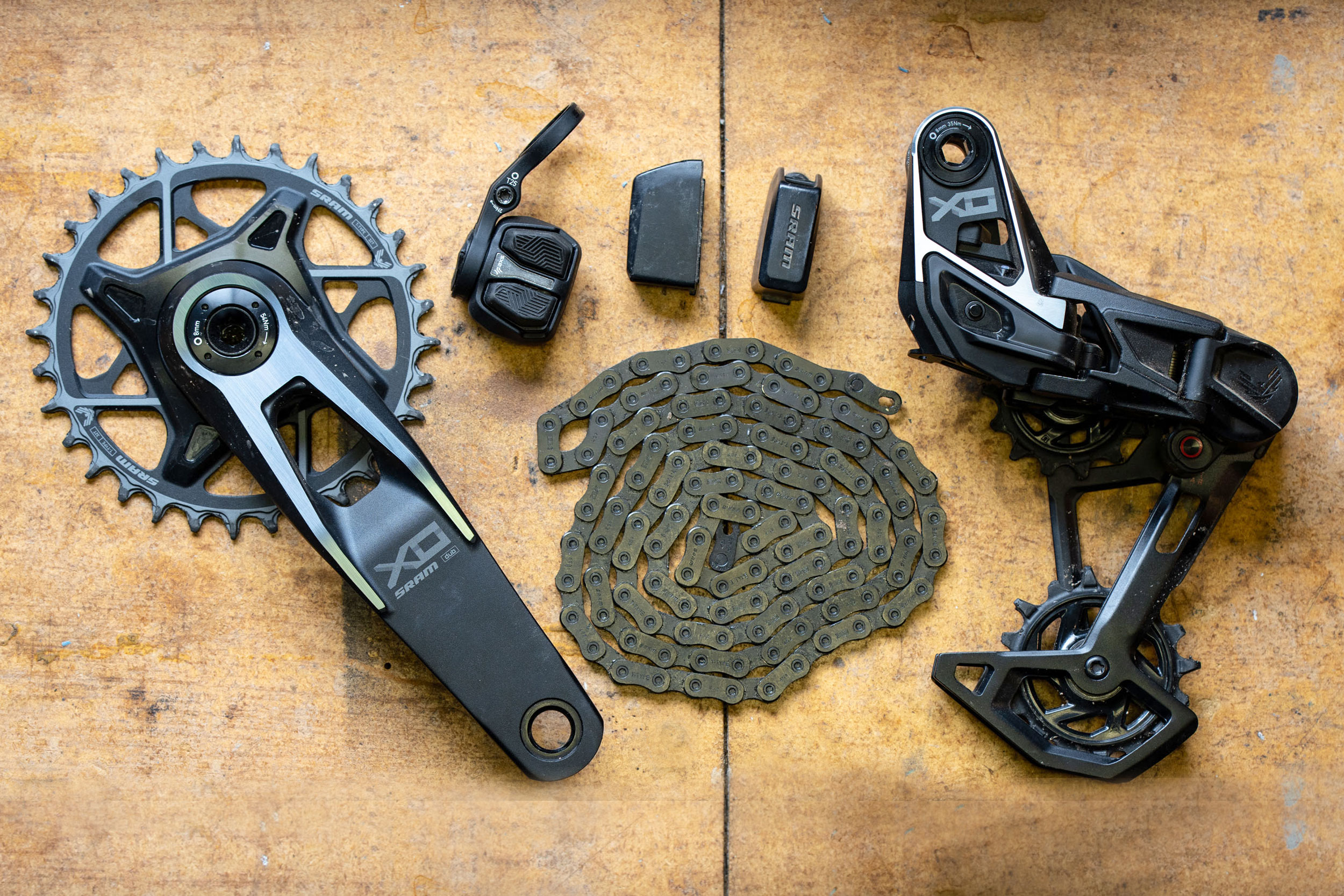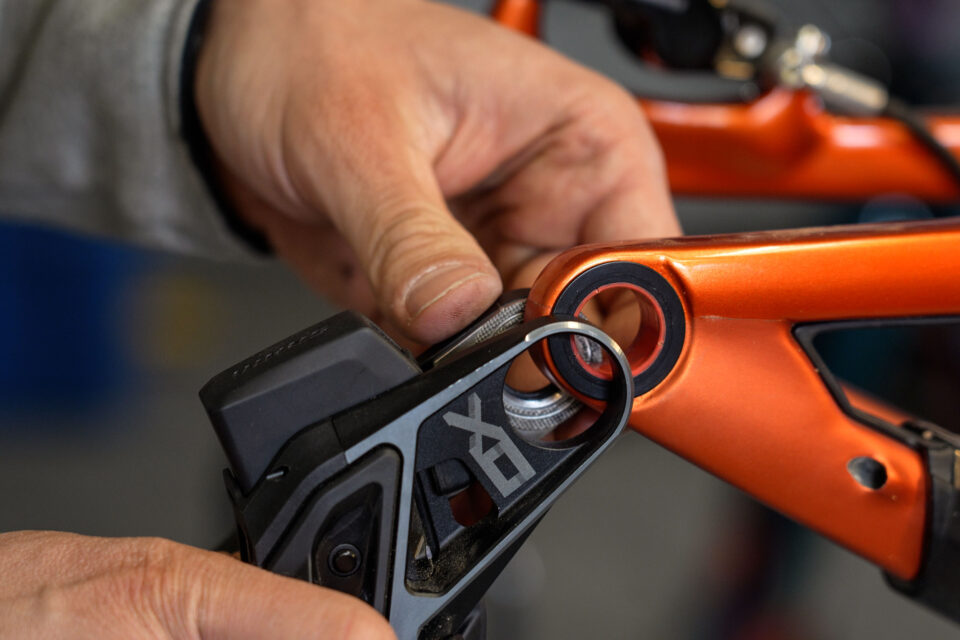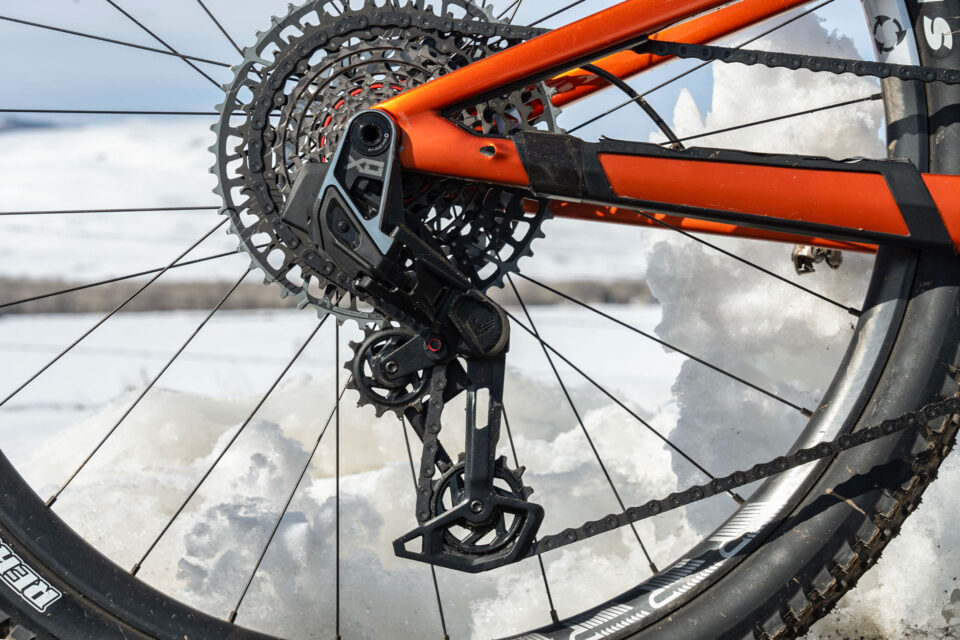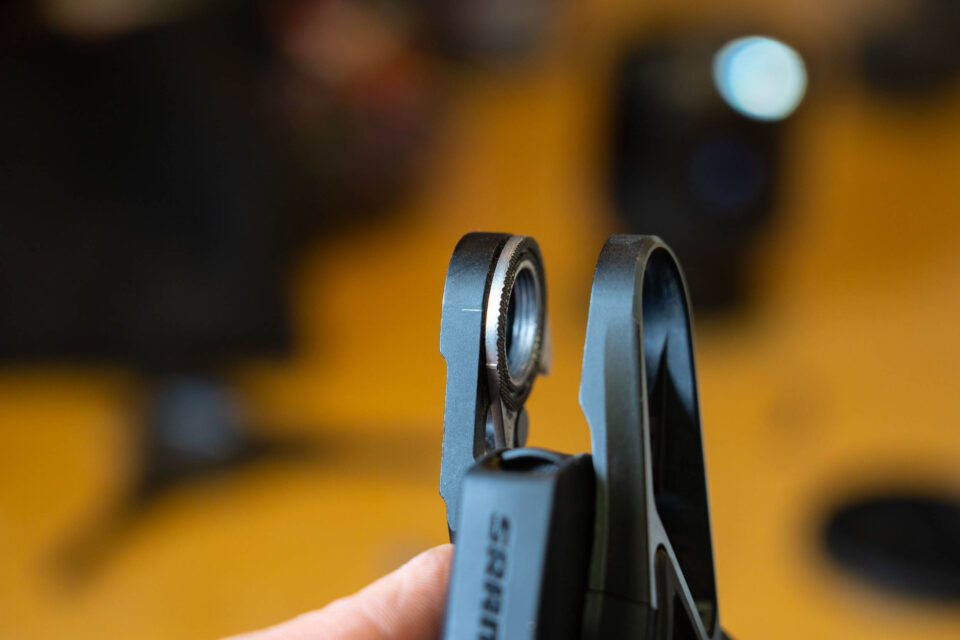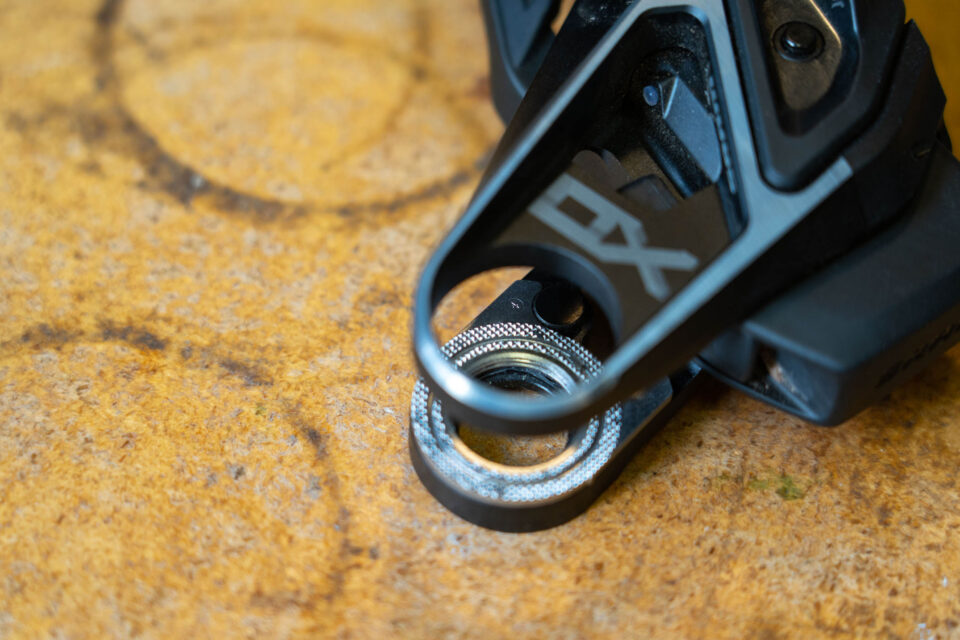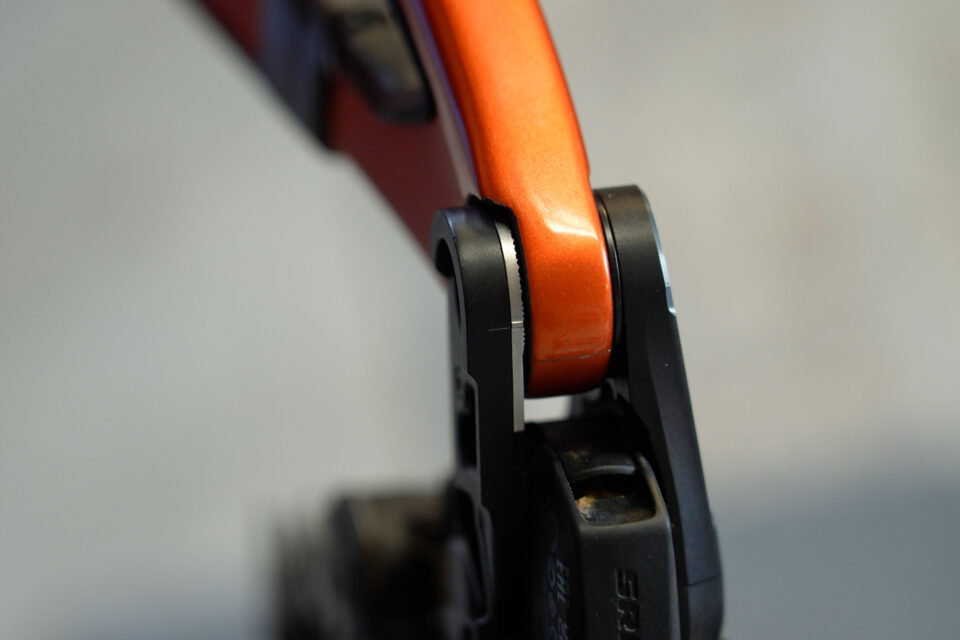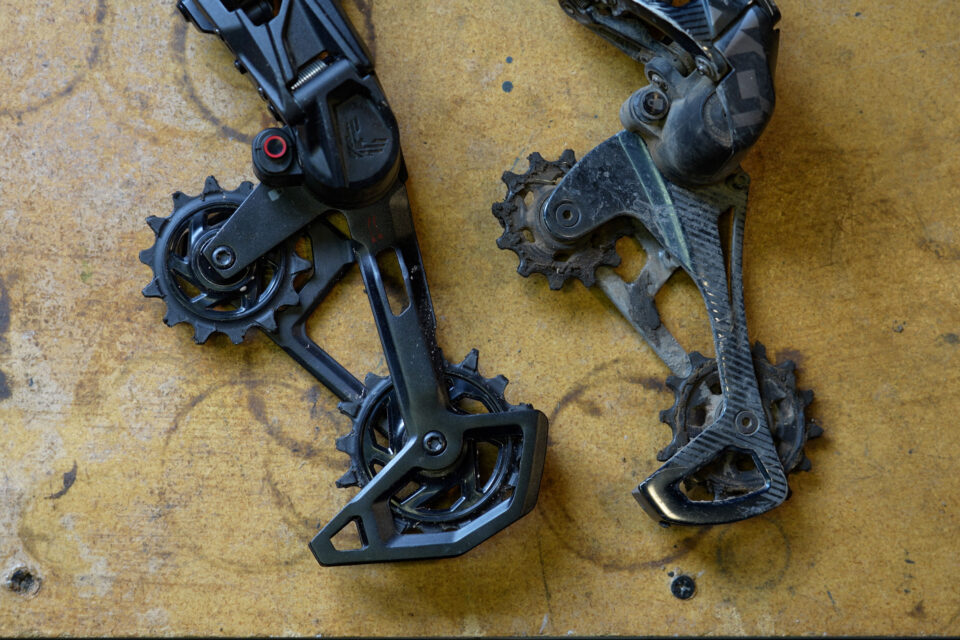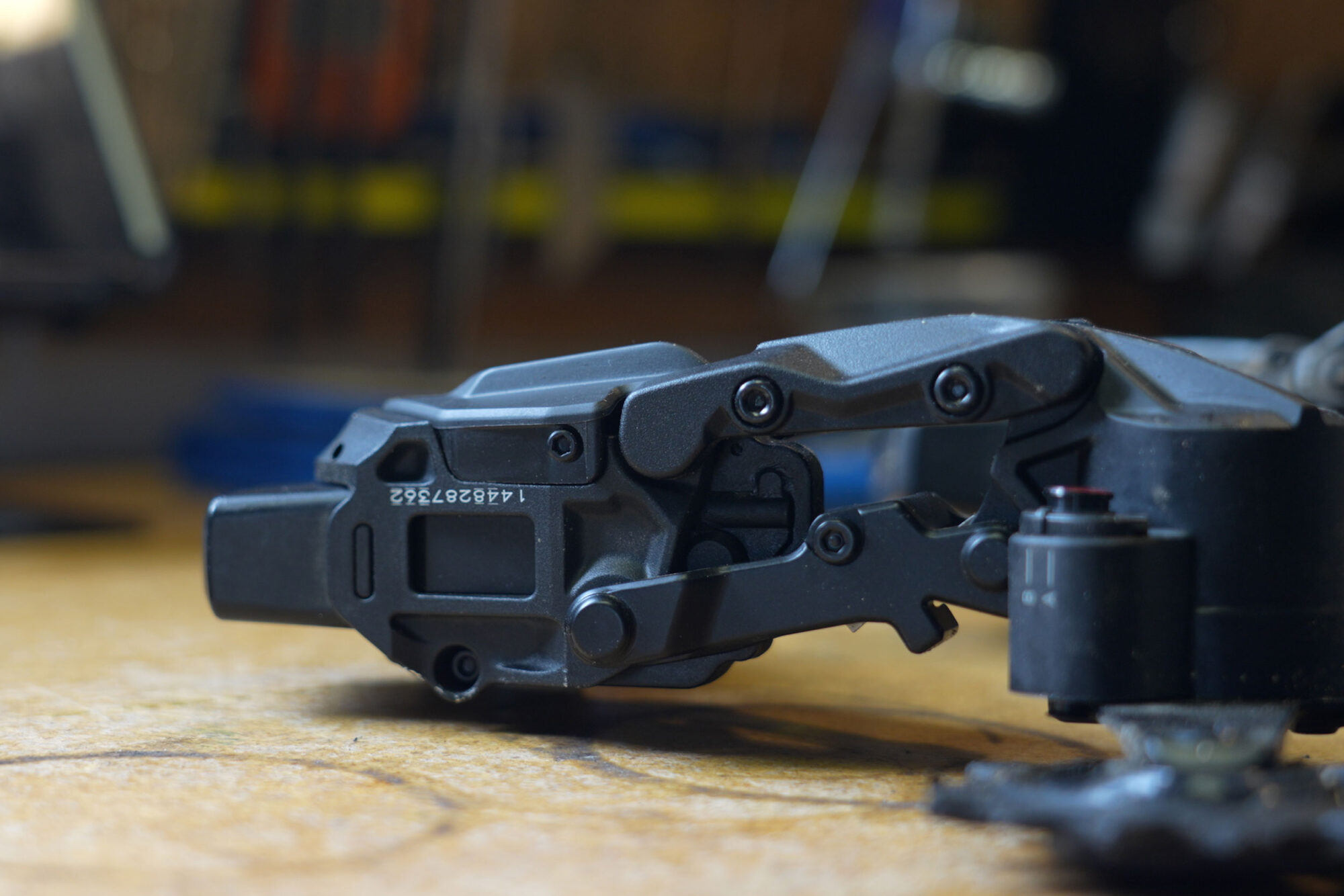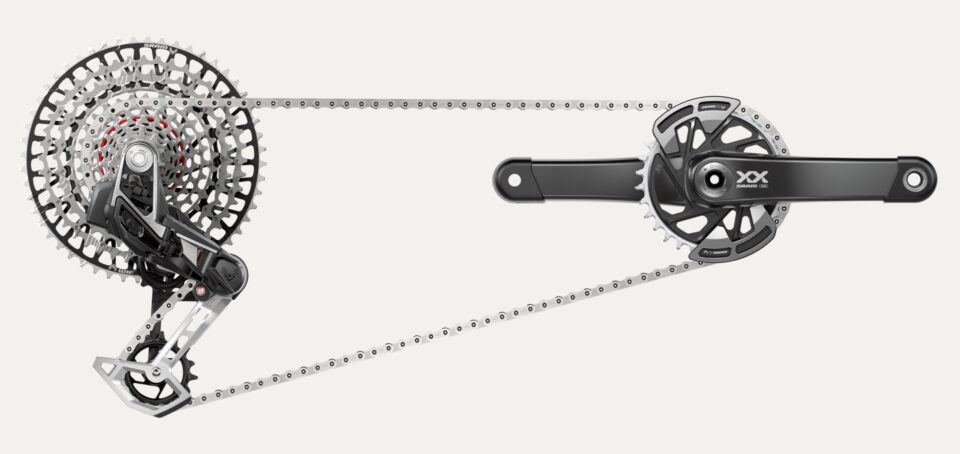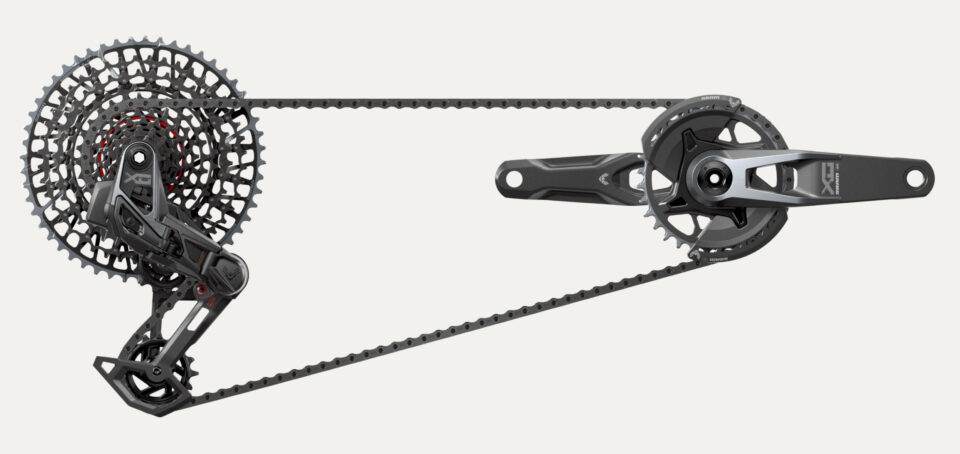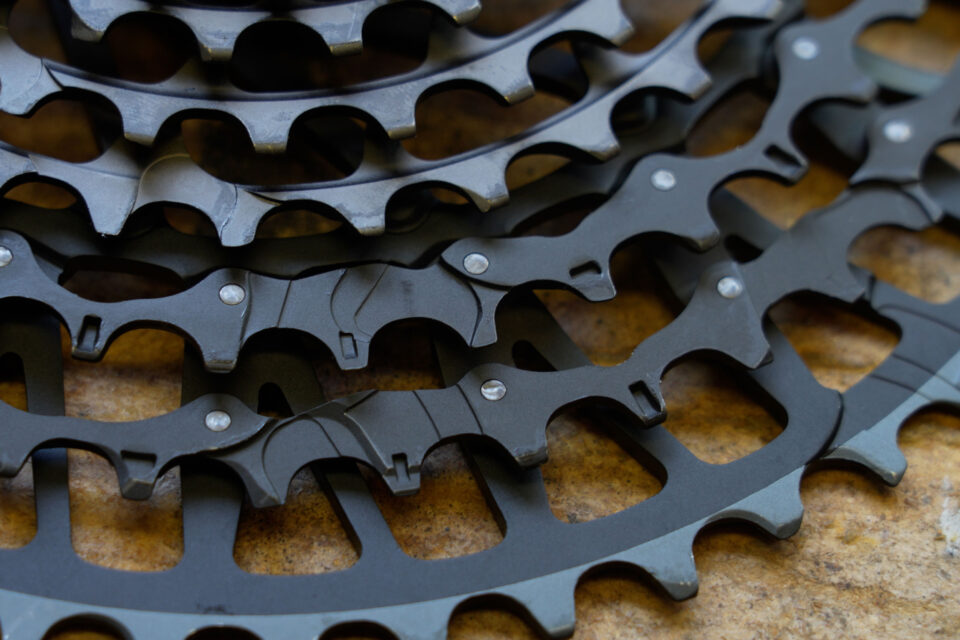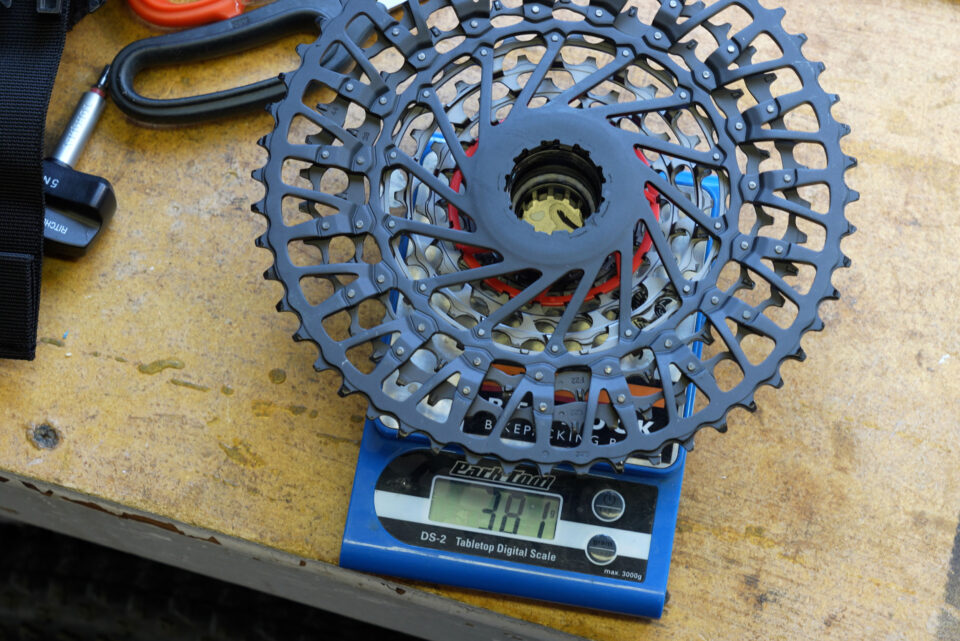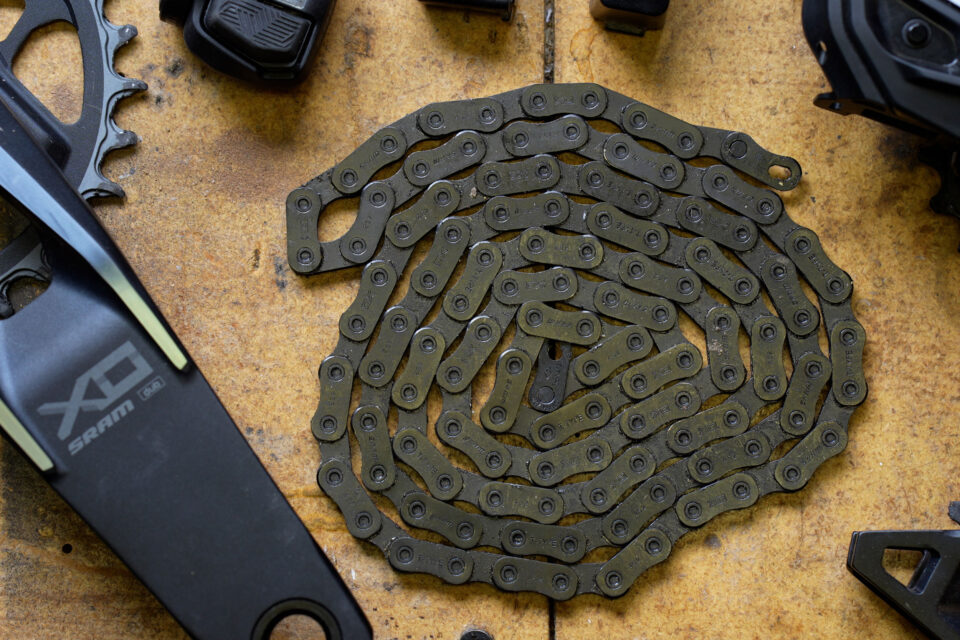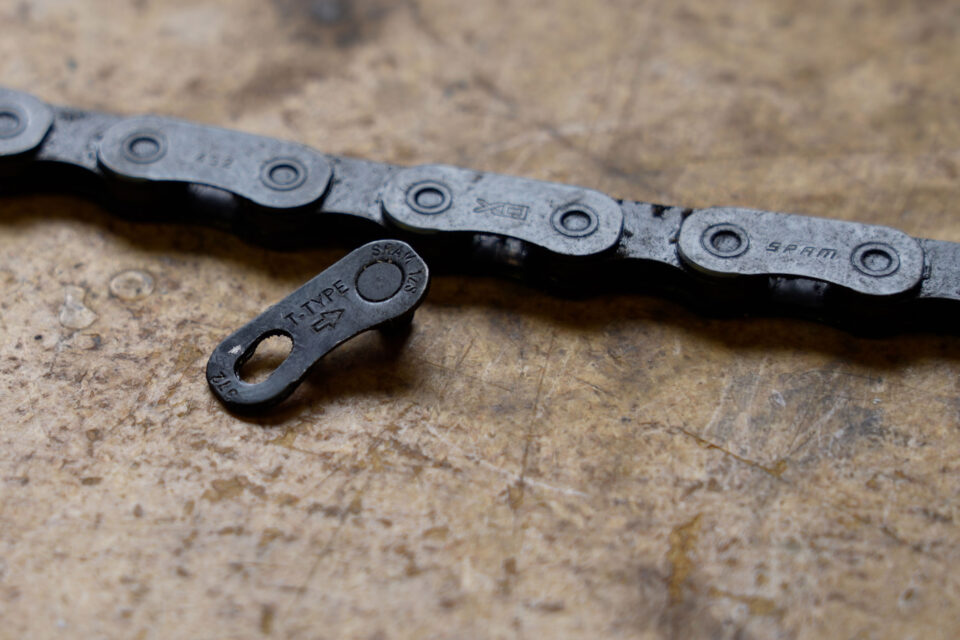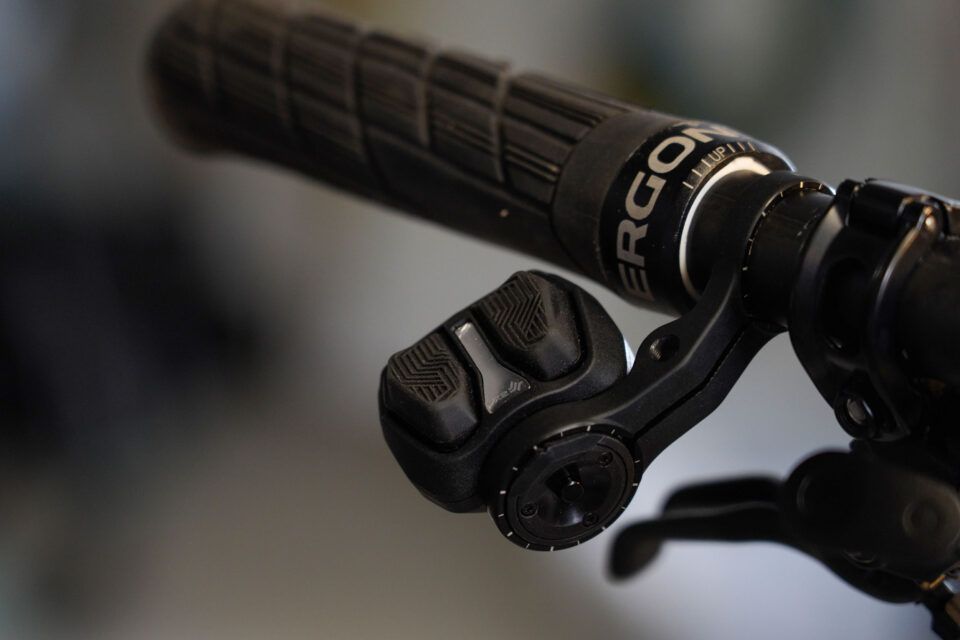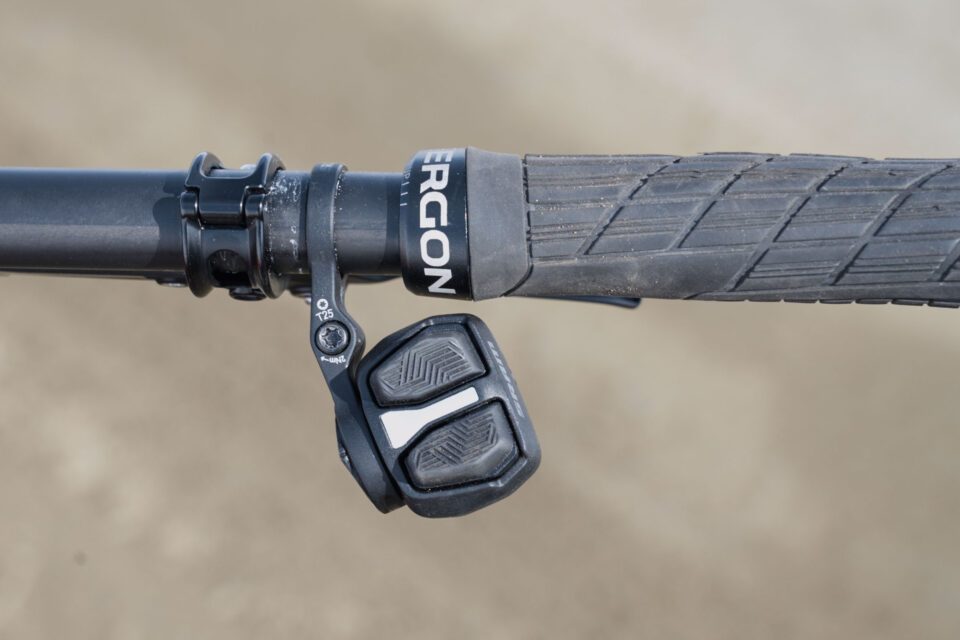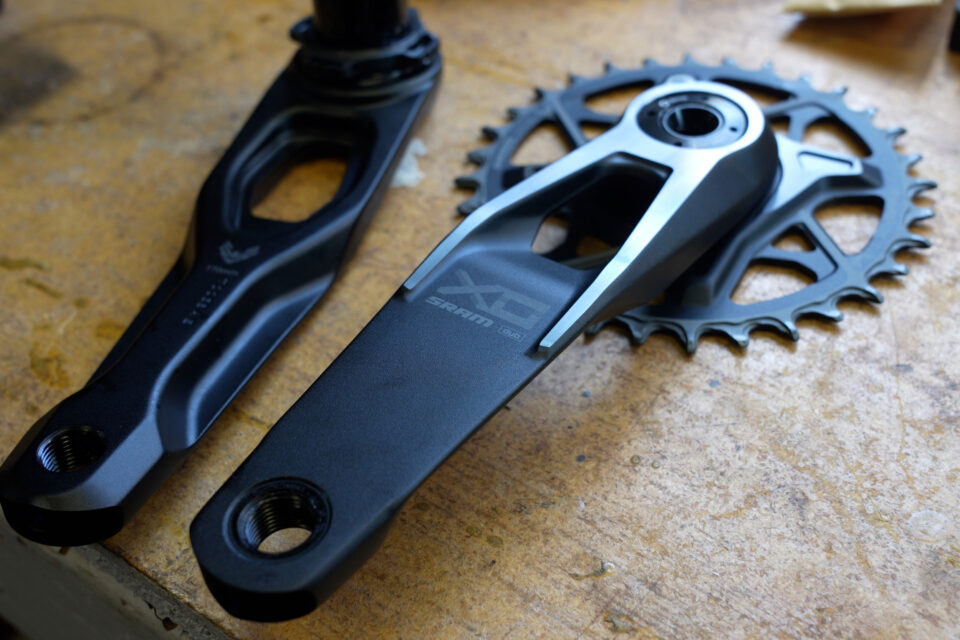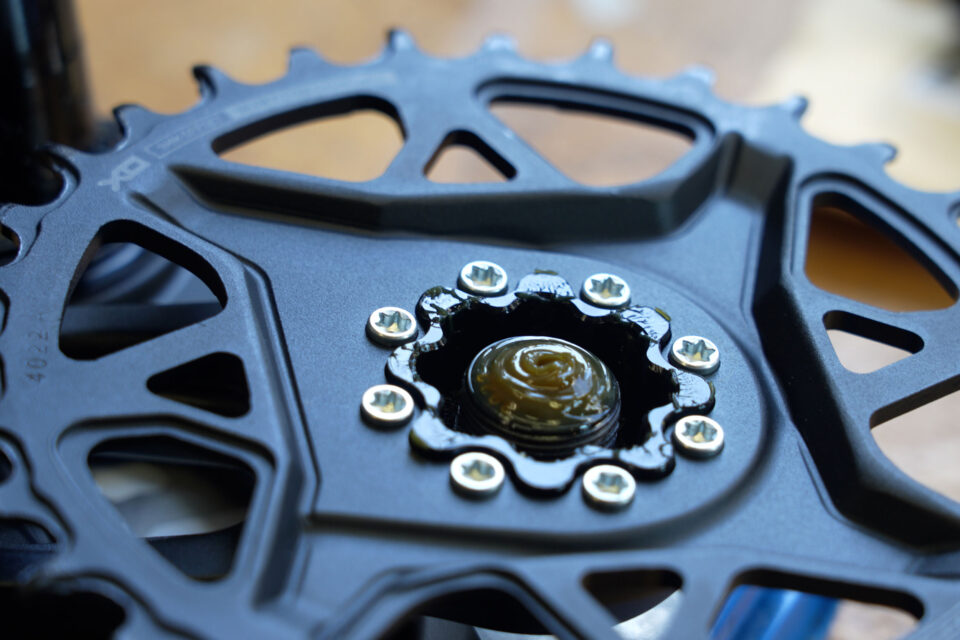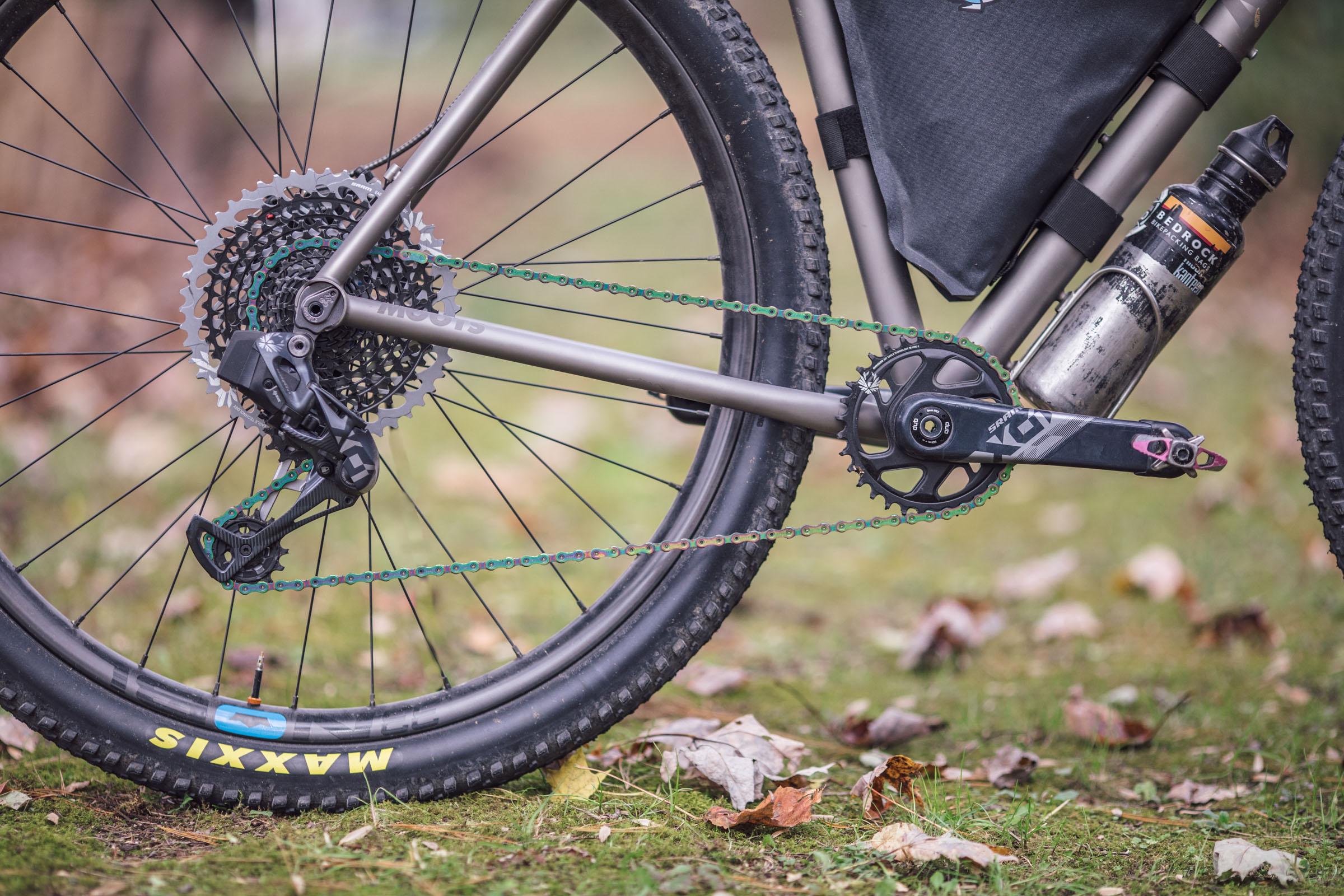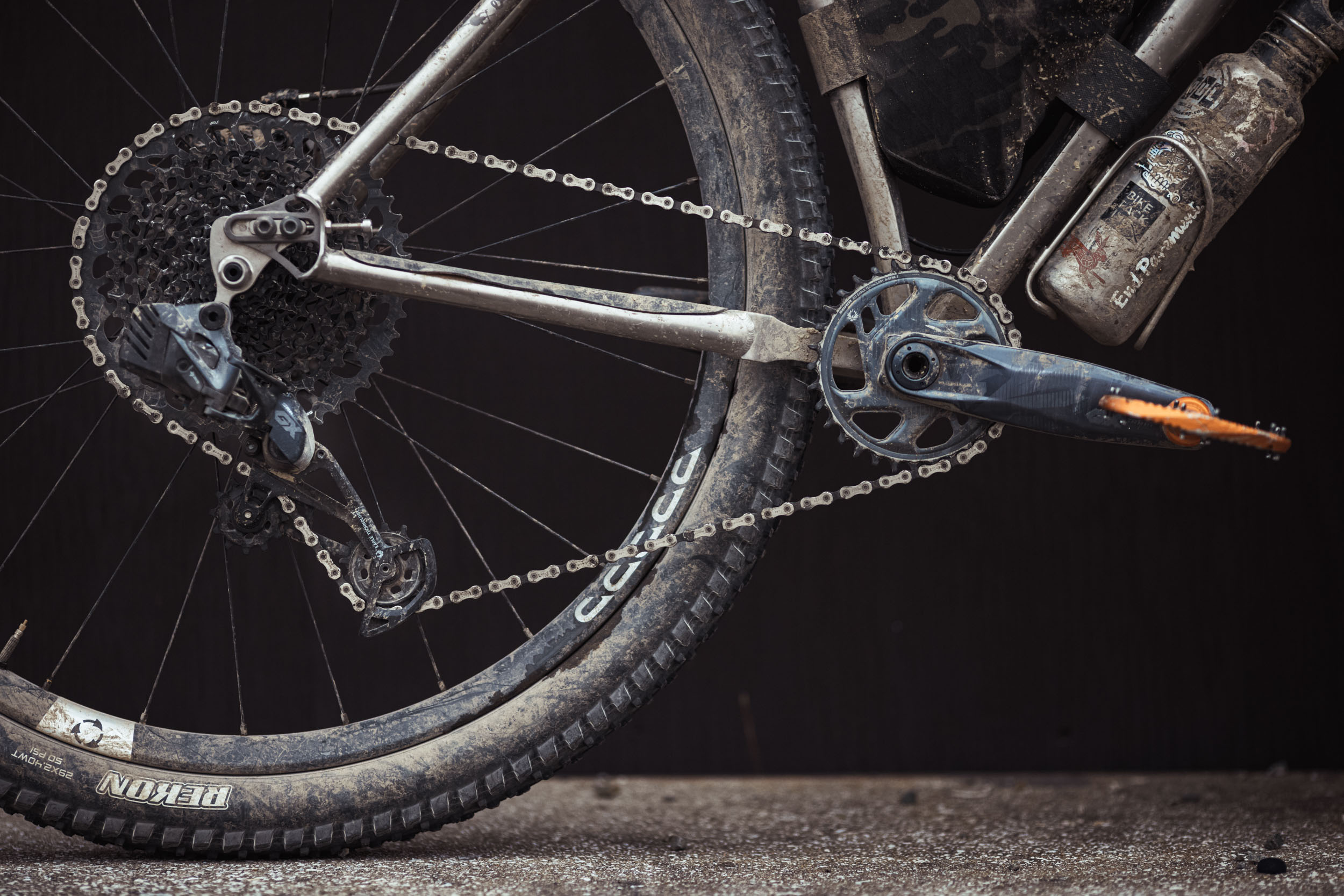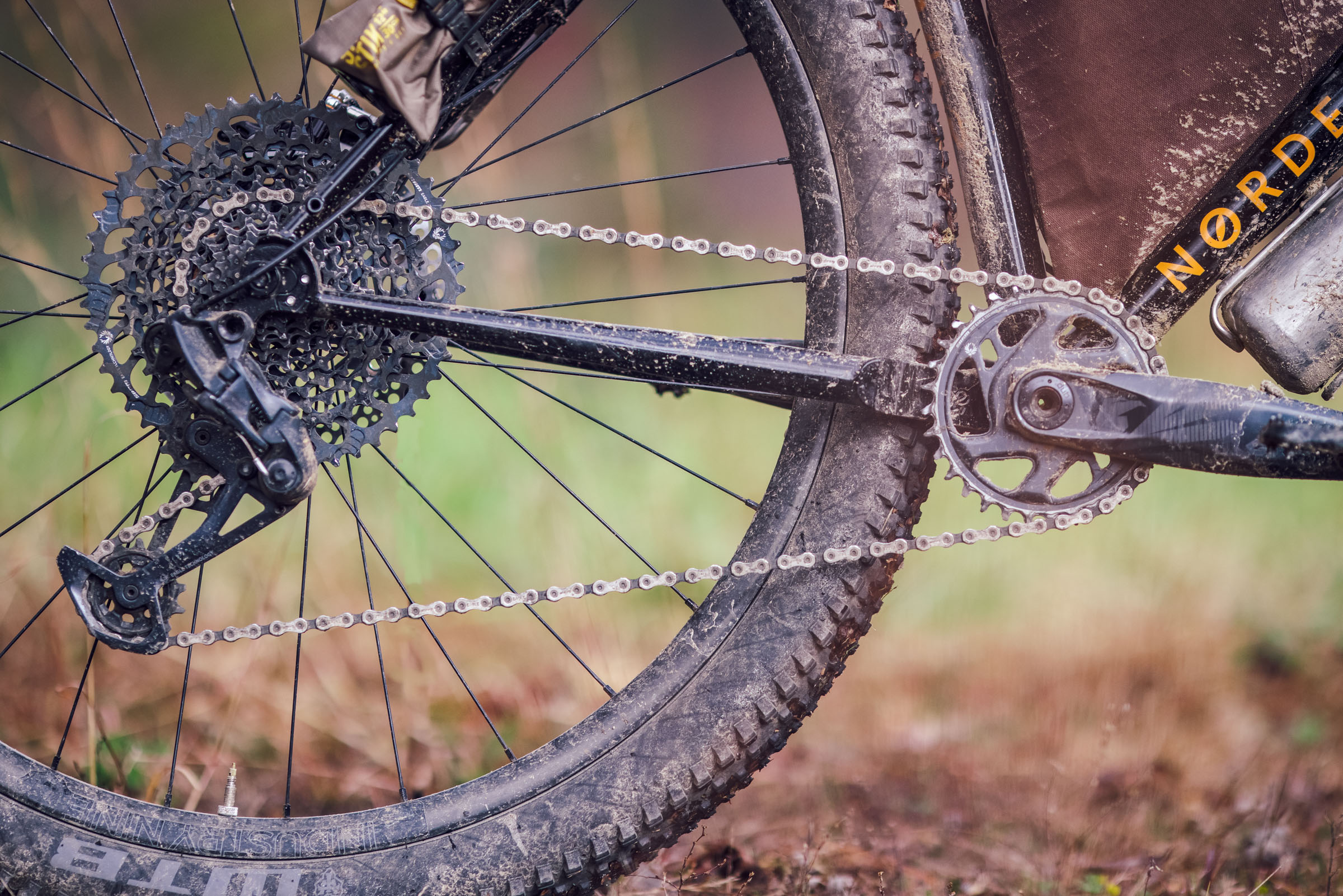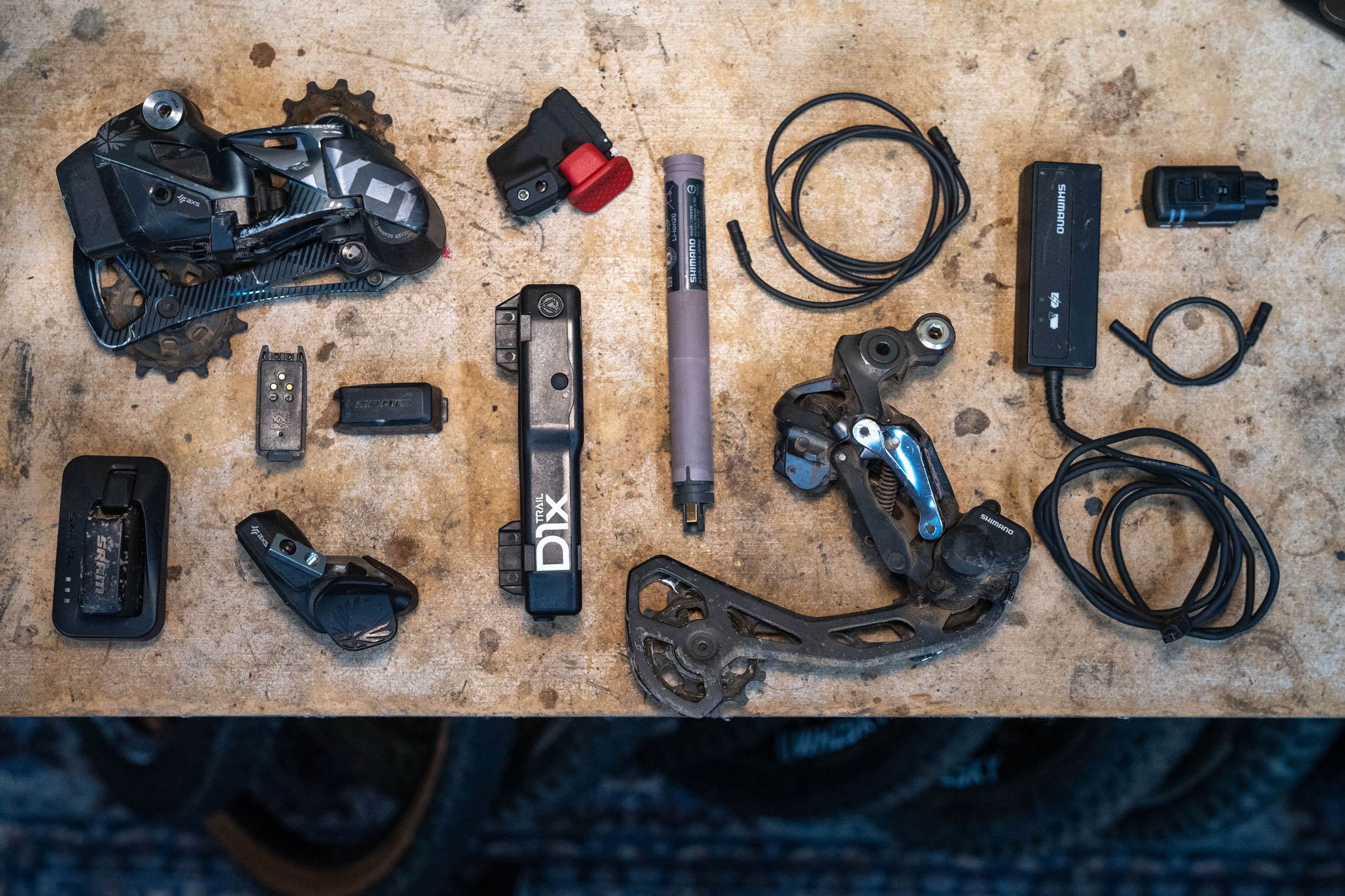SRAM Eagle Transmission Review: First Ride on E.T.
SRAM just dropped another innovation bomb on the mountain bike world with the new SRAM Eagle Transmission, a wireless drivetrain based on a hangerless direct-to-axle frame mount. We got a hold of the new X0 group for this first-ride review. Find that plus weights, prices, and details on the groups here…
PUBLISHED Mar 21, 2023
My, how quickly things change. It was only 11 years ago when SRAM was the first to ditch the front derailleur with the introduction of XX1, the first mainstream 1×11 mountain bike drivetrain. Then, in mid-2016, SRAM launched Eagle, the first 1×12 MTB group, which was a full-on attempt to make the front derailleur a thing of the past. And with a 10-50T cassette that matched the range of most 2x drivetrains, the industry took the bait.
SRAM went for cables next with the release of AXS in 2019, the first wireless mountain bike drivetrain. Today, SRAM is putting a hit out on the derailleur hanger with the advent of the SRAM Eagle Transmission, a new drivetrain that connects directly to the frame via a hanger-free axle connection. Is it progress for progress’s sake or worthy innovation that improves performance? We had the chance to try out the new Eagle Transmission—or E.T. as we’ve been calling it—to find out in this first ride report.
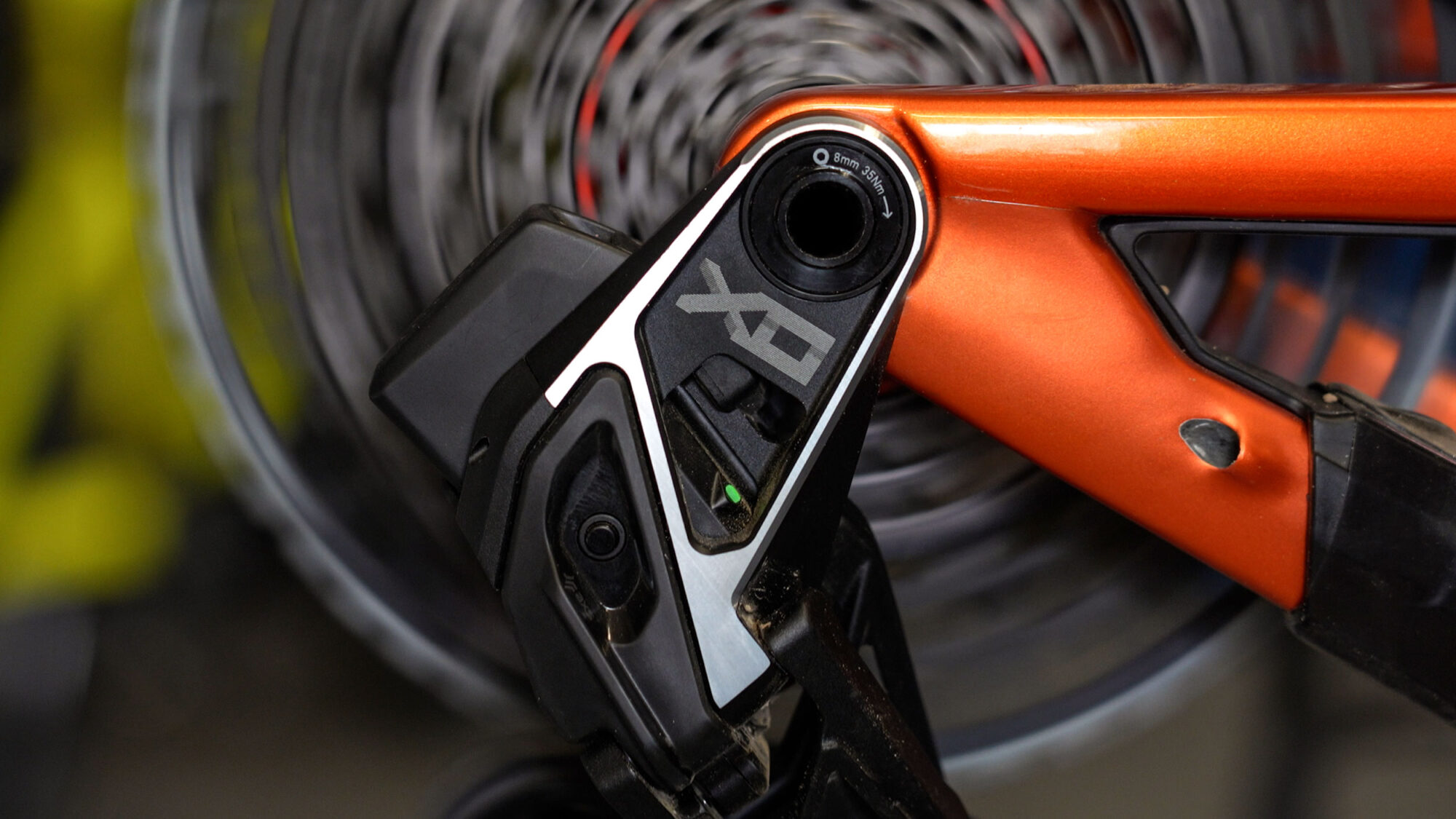
The T-type Derailleur
Before we dig into the guts of it, let’s look at the beating heart of the SRAM Eagle Transmission: the derailleur. After wrapping my head around it, I see this newfangled rear mech as a continuation of what SRAM started seven years ago. When AXS was originally released, it was pretty clear SRAM wanted to strengthen this part of the drivetrain. We ultimately learned that it was built to a highly durable and hardwearing standard; several of us here have tested AXS derailleurs, and they’ve withstood tens of thousands of miles of hard riding. Part of that effort was what SRAM created with the built-in “Overload Clutch,” an internal mechanism in the AXS derailleur that allows it to move inboard when it experiences an impact; then seamlessly reset into place, protecting the derailleur and potentially keeping a derailleur hanger from bending or breaking.
However, one of the reasons why derailleur hangers exist—or at least why they’re usually made of softer aluminum—is to protect the derailleur. So, with the Overload Clutch, why do you need a derailleur hanger? The new Eagle Transmission or T-Type derailleur is the next move as it does away with the hanger completely and instead connects directly to the dropout via a Hangerless Interface. In short, it clamps around both sides of the frame with the axle securing it in place. This is a dramatic shift and one that’s pretty interesting in my opinion. I’ve been through a lot to aluminum hangers over the years and even bought a derailleur hanger alignment tool to avoid having to order more.
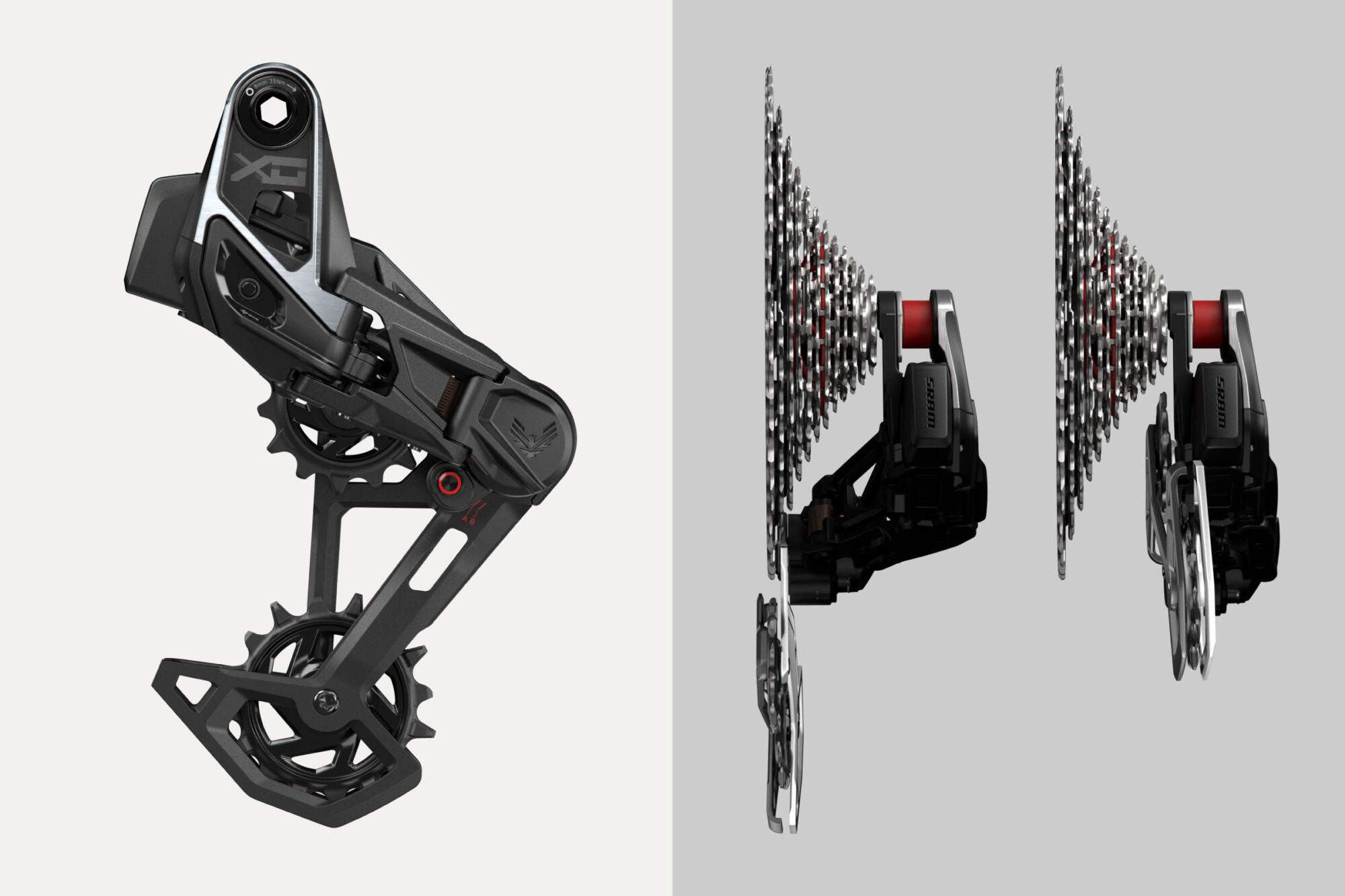
Simplicity was the second part of SRAM’s strategy with the advent of AXS. We could debate the dichotomy of electronics and bicycles to no end, but there’s no denying that the wireless Eagle AXS derailleur made installation easier for broad-market mountain bikes. The SRAM Eagle Transmission takes this even further by eliminating adjustment screws altogether. I’ll first let Neil dig more into all of this in the video review below, then pick back up on details about the XX SL, XX, and X0 groups (including a pricing grid and weights) further down the page.
UDH Only
First things first, the SRAM Eagle Transmission is only available for bikes built around SRAM’s own Universal Derailleur Hanger (UDH). Their UDH is now available on quite a few bikes, but only bikes that have been released after UDH’s rollout in 2019. Brands using UDH include Revel, Transition, and Ibis. You can find a full list of others here.
As Neil hinted at in the video, UDH was a noble idea. The goal was to simplify this odd little part and reduce the number of hangers out there to one. It makes sense to simplify a part that’s intricately specialized and consistently causes confusion. The beauty of the UDH is that it works with any rear derailleur, be it SRAM, Shimano, TRP, or Microshift. However, it may have been a preemptive move on SRAM’s part, with the ultimate checkmate being the T-type derailleur.
SRAM Eagle Transmission Groups
The SRAM Eagle Transmission comes in three groups: the high-end XX SL, mid-range XX, and X0, each with a variety of e-bike options, power meters, bash guards, and add-ons. For the sake of clarity, we’re going to focus on the three main groups and the core components of each.
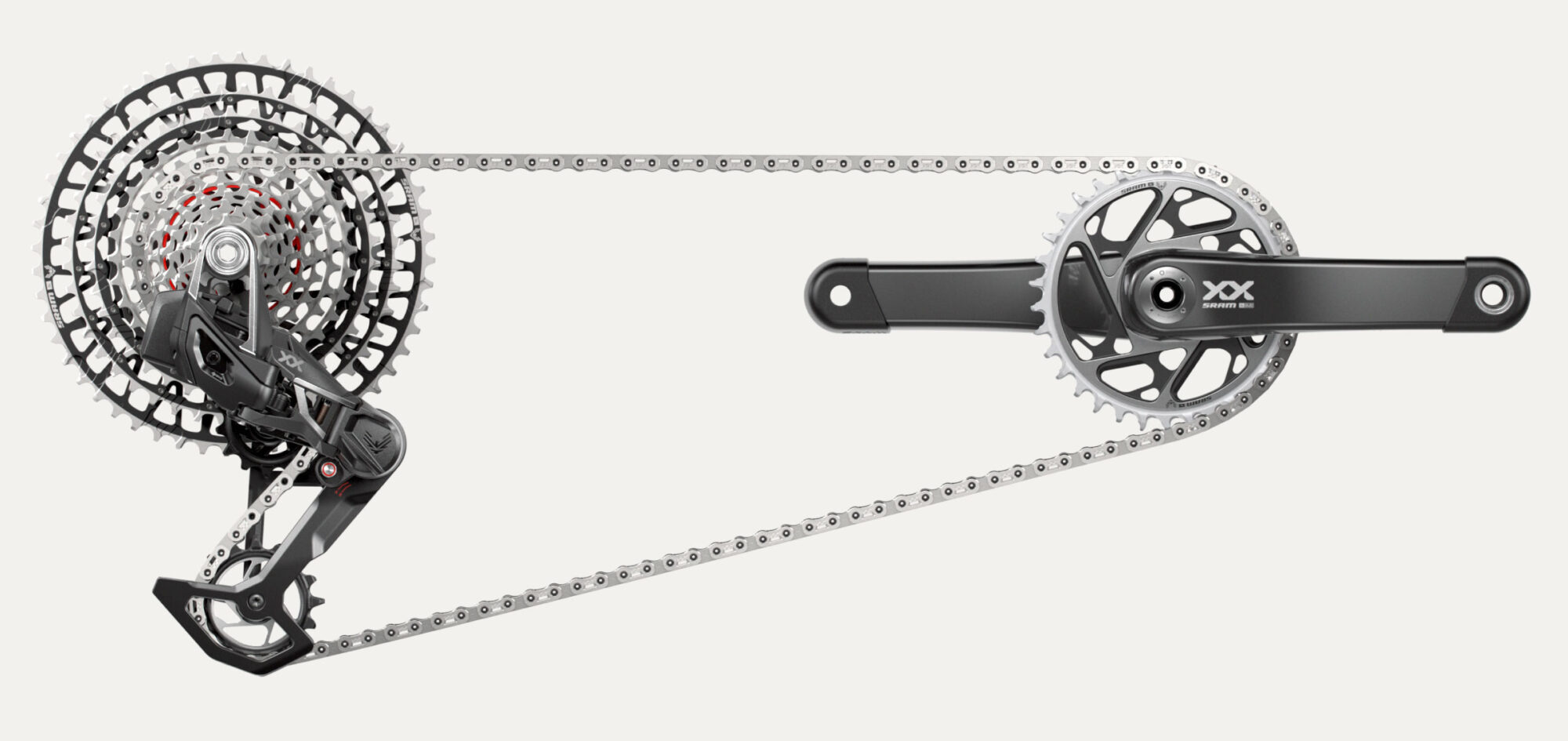
SRAM Eagle Transmission Pricing
Before going any further, here are all the prices and weights for each group. For comparison, I included GX AXS in the mix so you can get a feel for pricing.
| Group | GX | XXSL | XX | X0 |
|---|---|---|---|---|
| Derailleur | $390 | $650 | $650 | $550 |
| Cassette | $185 | $600 | $550 | $400 |
| Crankset | $146 | $660 | $600 | $360 |
| Shifter | $158 | $150 | $150 | $150 |
| Chain | $36 | $150 | $125 | $100 |
| Totals | $915 | $2210 | $2075 | $1560 |
SRAM Eagle Transmission Weights
The only weights in this table that are actual are of the X0 group and the GX AXS group, shown for comparison. Also note that SRAM didn’t include the crankset weights for the other two groups, so the totals aren’t accurate. Instead, they’re based on the same 623-gram actual weight we pulled for the X0 crankset with a 32-tooth chainring. We’ll adjust this once we get details on weights for each of the cranks. The cranksets have the biggest price variations, so I’m guessing the weights are significantly different, in turn dropping the totals by 100+ grams.
| Group | GX | XXSL | XX | X0 |
|---|---|---|---|---|
| Derailleur | 452g | 440g | 465g | 470g |
| Cassette | 453g | 345g | 380g | 381g |
| Crankset | 635g | TBD | TBD | 623g |
| Shifter | 80g | 48g | 48g | 48g |
| Chain | 244g | 240g | 247g | 262g |
| Totals | 1874g | 1596g | 1763g | 1784g |
SRAM Eagle Transmission Cassettes
The SRAM Eagle Transmission cassettes still have 520% range but are otherwise completely different. Perhaps the two biggest distinctions are the ramp mapping and the cog progression. The gear progression is upgraded to step down from the 52-tooth cog to 44 and 38 tooth cogs versus jumping from 52 to 44 then 36. As I see it, this is a big improvement for riding in steeper terrain and comes closer to Shimano’s 39-45-51T progression.
SRAM also claims that Eagle Transmission offers the best shifting under load yet thanks to their new cassette ramp mapping. As Neil mentioned, their claim that the harder you pedal the better it shifts is indeed what he experienced. Hopefully, their additional claims that the cassettes will last longer hold true too. I suppose the other significant structural difference is that the cassette was also moved outboard 2.5mm toward the dropout. This is a result of the frame adjustments implemented with the direct mount sans the UDH. This results in a 55mm chainline for the drivetrain. As Neil adds, “My understanding is that the crank is now optimized for both Boost and Superboost without having to go with a wider Q-factor for Superboost cranks.” On the flip side, this also means that Eagle Transmission cassettes and parts are not cross-compatible with older Eagle parts, whether AXS or mechanical.
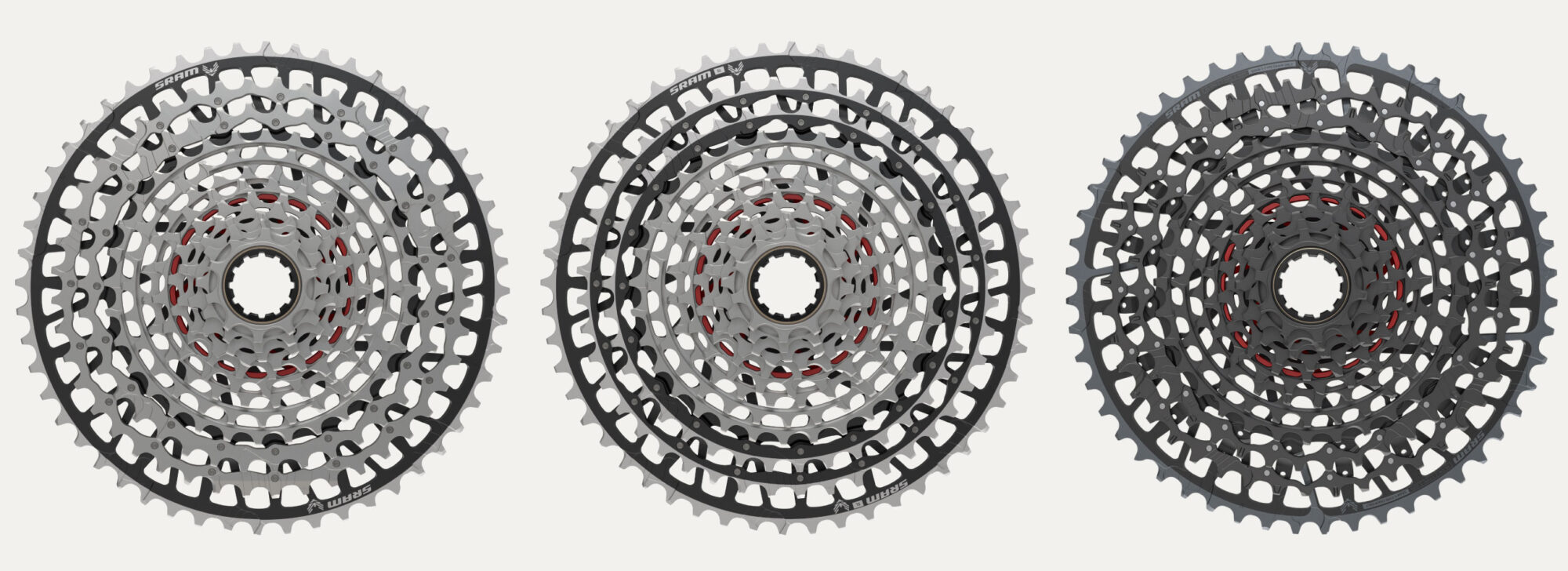
SRAM states that the XX SL cassette (CS-XS-1299) is their lightest 10-52 cassette yet. It has a fully machined 4-12 steel cluster and an ultralight aluminum spider for gears 1-3. The XX cassette (CS-XS-1297) has a machined tool steel X-Dome cluster for cogs 4-12 and stamped steel 38T and 44-tooth cogs are pinned to the lighter weight aluminum first gear. The X0 cassette (CS-XS-1295) has what appears to be the exact same design as the XX version but features a Dark Polar nickel-plated finish.
Flat top E.T. Chains
While the T-type chains looks similar to the SRAM flat top 12-speed road chains, they are quite different and designed to work with SRAM Eagle Transmission systems only. As with all the other parts, the chains come XX SL, XX, and XO variations. SRAM claims that the flat top chain is their strongest chain yet and that it maximizes shifting performance. It also looks pretty nice, for what that’s worth.
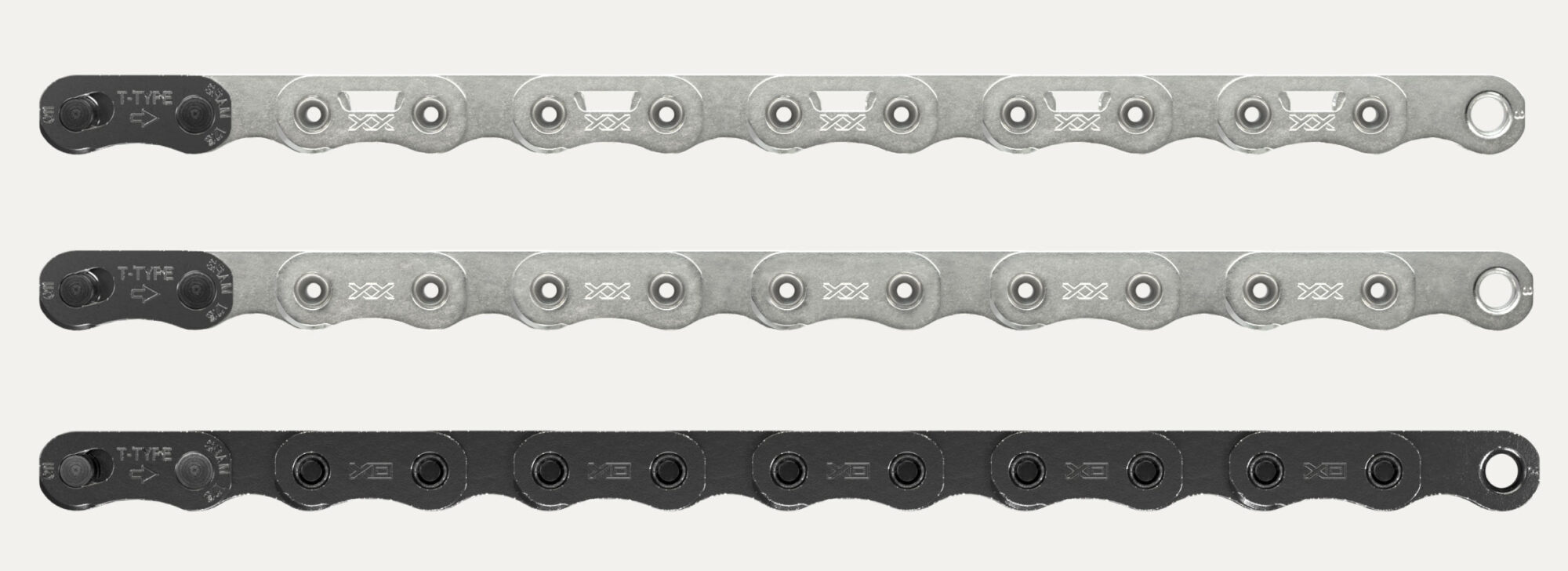
As you saw in the weights above, there isn’t too much of a difference in the three chains, aside from the fact that the XX SL variation has cutaways in the link plates. The XX variations come in silver whereas the X0 comes in “Dark Polar.” There is a significant difference in price, though, with a $25 increase from chain to chain starting at $100. That’s not pocket change, and we hope they last as long as the drivetrain does. As Neil pointed out, SRAM AXS Road chainrings are compatible with T-type chains, so you can use a SRAM AXS road crankset for a mullet configuration with Eagle Transmission.
AXS Pod Shifter(s)
Visually, the new AXS Pod controller looks completely unlike its predecessor, but it’s also the only component in the Eagle Transmission group that’s backward compatible with the old AXS ecosystem. At 48 grams, the Pod is lighter weight than Eagle Ecosystem AXS Controllers. It’s also been updated with a completely new ergonomic design and more options for adjustability.
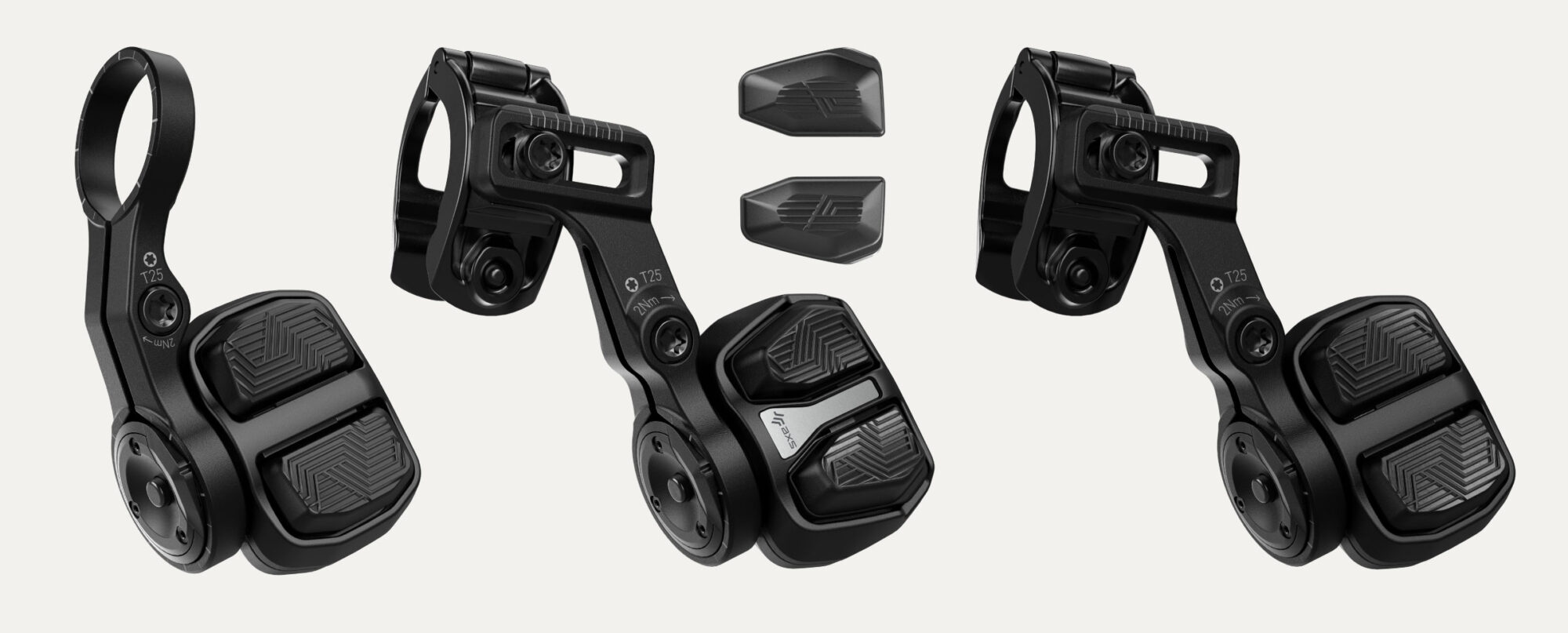
One of the more interesting points of adjustment is the fact that it can be used on the right or left side for those who want to shift with their left hand. The controller comes with a bridge clamp to replace the matchmaker, or you can use the included clamp. The tangible clicks are a nice touch too. There’s also a Deluxe version that comes with interchangeable concave and convex buttons. According to SRAM, drop-bar AXS blips can be used with the Eagle Transmission, although we’re not sure about Force/Rival AXS levers. We’ll amend this section once we find out.
Cranksets and Chainrings
This was also a big overhaul in the SRAM Eagle Transmission crankset lineup. XX SL and XX cranks both come in carbon and look very muck like the AXS counterparts at first glance. However, the aluminum XO crank looks drastically different. SRAM claims it’s the most advanced aluminum crankset they’ve ever made, and it looks the part with a very technical cutaway and molded curves on the back.
The XX SL cranks get a carbon hollow core design, and the XX cranks get a foam core and the option to run a removable and replaceable bash guard, which is pretty neat. All three cranksets are available with 165, 170, or 175mm arms.
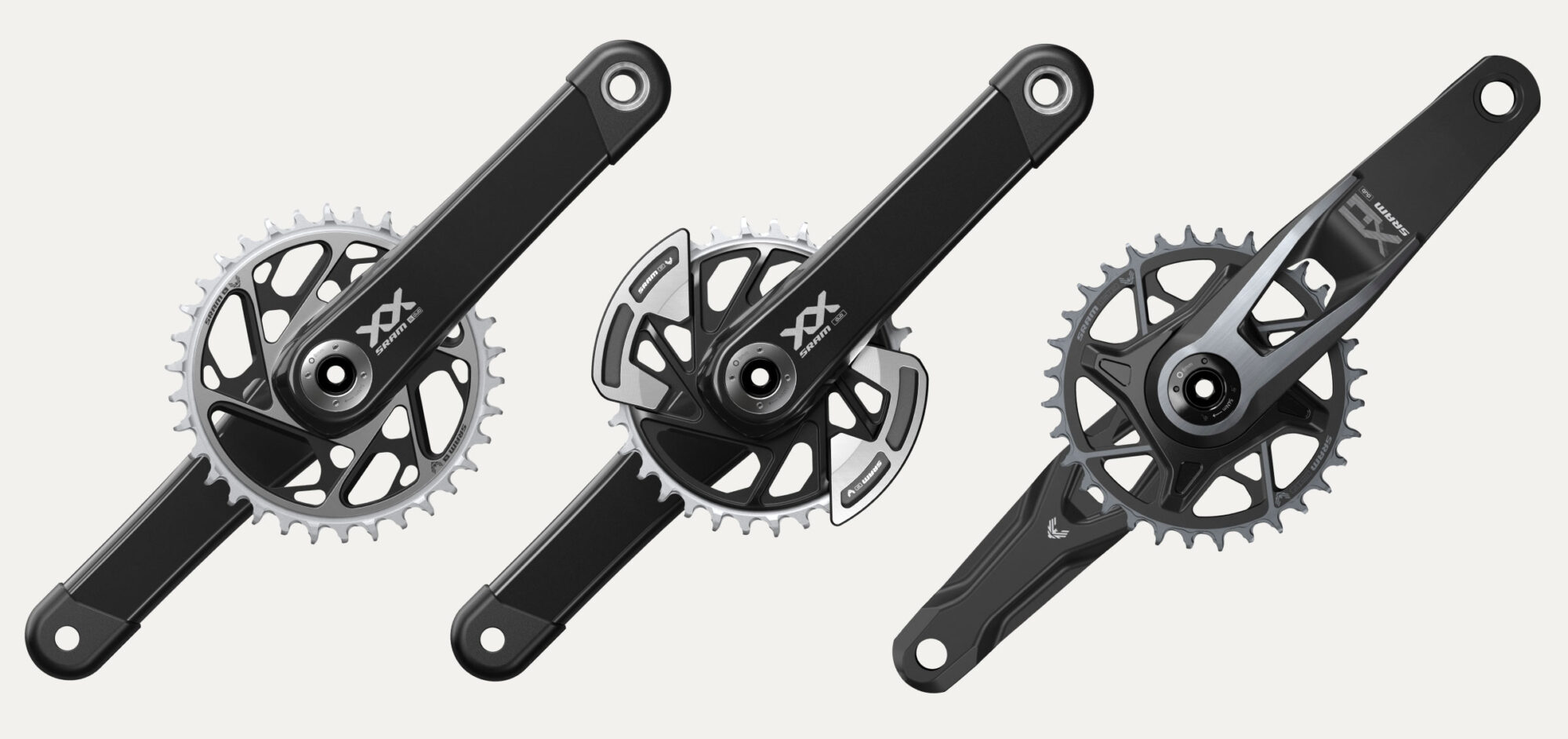
The biggest diversion from SRAM’s AXS cranks is under the hood, or behind it, rather. The chainrings have a completely new mounting system, making it three times more challenging to remove a chainring—or 2.6666 times, to be exact; there are 8 bolts holding it on instead of three. SRAM did this so that each new crank can be upgraded with the Quarq AXS power meter. As stated in the press materials, SRAM currently offers 32, 34, 36, and 38-tooth chainrings for the new Eagle Transmission cranksets. As mentioned above and in the video, weights were not offered, but the XO crankset with chainring comes in at 623g on our scale.
To be continued. We’ve only scratched the surface testing the new SRAM Eagle Transmission. There are pros and cons mentioned throughout this writeup and in the video, but we’ll be back with our usual in-depth, long-term review once we’ve racked up the miles on this system. Visit SRAM.com for more, and if you have any thoughts or questions on SRAM Eagle Transmission, be sure to drop us a line in the conversation below.
Related Content
Make sure to dig into these related articles for more info...
Please keep the conversation civil, constructive, and inclusive, or your comment will be removed.







